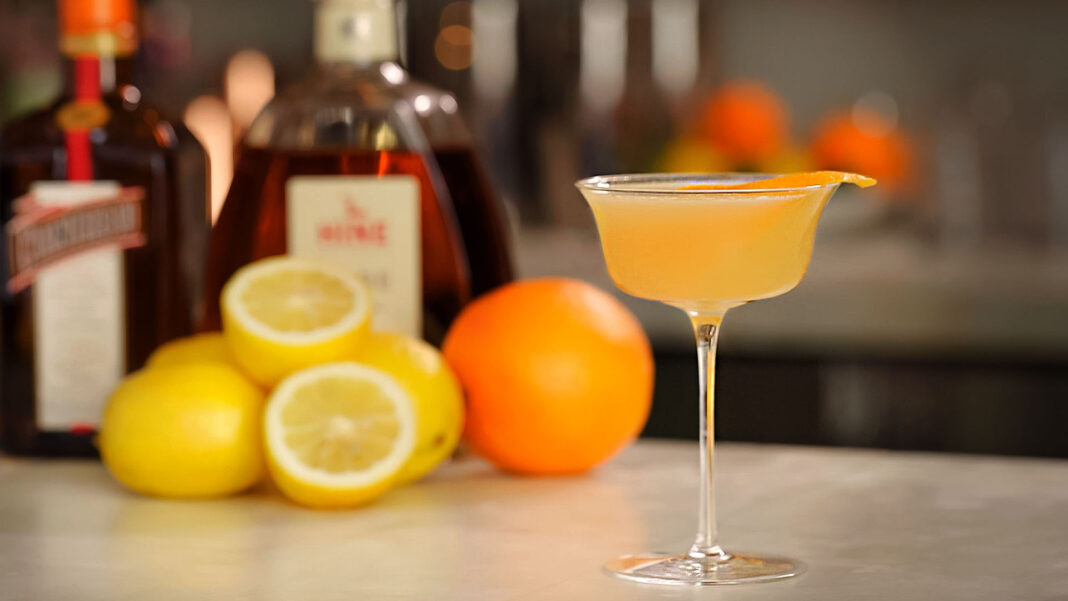For the longest time, I never “got” the Sidecar. For years it’s been a thorn in my side, a pebble in my bartending shoe. I’ve had a few, ordered them here or there, but I never had a version that was particularly delicious or compelling.
And this elusiveness was especially frustrating, because we’re not talking about a Cosmo here—this is the Sidecar, and everywhere you look, you find world-class cocktail minds tripping over each other to pontificate about how wonderful Sidecars can be. Here’s David Wondrich, in his 2007 Imbibe , asserting that “life without Sidecars would be very dreary indeed. ” Dave Arnold calls it “a fantastic drink.
” It goes on and on like this. Tom Macy says , “it’s in my pantheon of all-time favorites. ” Jeffrey Morgenthaler calls the Sidecar “the first cocktail I would eventually fall deeply in love with.
” Well hey, falling in love sounds pretty great, but here I am, microwaving dinner for one. What gives? As it turns out, the Sidecar is a tricky drink. Deceptively so.
In recipes and write-ups, you’ll hear it frequently referred to as simple, which is almost true. Admittedly, at only three ingredients there aren’t a ton of moving parts, and on first blush it looks like a basic sour, just like the Daiquiri or Tom Collins or any of the other dead-easy drinks out there, but the Sidecar has a twist. Those others use sugar as a sweetener—the citrus’s sour balances the sugar’s sweet, and the spirit sits on top—while in a classic Sidecar, the sole sweetener is orange liqueur.
This may seem like a simple substitution, but it’s not. Orange liqueur is not only less sweet than sugar, but it also contains alcohol. What’s more, one of the hidden requirements about making a Sidecar worth drinking is that you absolutely must use a top-quality orange liqueur, all of which are full 80 proof, so now our once-easy balance becomes a three-dimensional target: We always have to make sure our drinks are neither too sweet nor too tart, but now also not too strong.
More alcohol demands more sweetness, but in this case, the sweetness itself brings alcohol. It’s tricky. While not simple, what the Sidecar is is foundational.
It defines a whole category of drinks, one that represents not only esoteric favorites like the White Lady but undefeated people’s choice champions like the Margarita . A sour balanced with orange liqueur can be challenging, but once you spend some time with it, ensure quality ingredients and perfect the balance, you begin to understand. There’s a reason it’s lasted 100 years, a reason why experts from the ‘40s all the way to the modern era list the Sidecar among the half dozen most important drinks in existence, and a reason why you can find bars from New York to New Delhi naming themselves after it.
I have come to see: The Sidecar can be sublime. Yes, I may have unwittingly dedicated my early bartending career to exploring all the many ways to make a Sidecar poorly, but I have since learned. A well-made Sidecar is a high-stakes game, all the features of a classic sour but even more so: The acidity is racier, the sweetness more voluptuous, the spirit not just good but seductive, and the balance bracing.
It’s electric and demands attention, with each sip refreshing but still capable of putting you on your heels. It gets your heart beating. They’re too specific to be prescribed for every moment—their best incarnation leans a touch strong, and a touch tart—but take a sip of a proper Sidecar at the beginning of a fancy night out, or just out of work on a Friday, and tell me it doesn’t taste like true love.
Add all ingredients to a cocktail shaker and shake hard for perhaps a touch less time than you would a normal sour, maybe five to eight seconds. Strain into a coupe or cocktail class, and garnish with an orange peel. NOTES ON INGREDIENTS Cognac: While a Sidecar can be made okay with a less-aged Cognac, the one worth writing poetry about really needs something VSOP or older.
In a lot of ways, the older the better—I’ve never had one that I thought was overaged—but for me (most of the time), a VSOP as bright as H by Hine, as vibrant as Park VSOP or as rich as Remy Martin VSOP all work exceptionally. What you want the Cognac to add is deep oak resonance, so while it’s certainly better with some Cognacs than others, anything VSOP is a good start. Orange Liqueur: Many reputable people call for a curacao here, like Pierre Ferrand Dry Curaçao or Grand Marnier.
Both can be great, but it’s a harder needle to thread—their oakiness needs to manage to not step on the toes of the inherent oak in the Cognac. Personally, I prefer the bright juiciness of Cointreau, which is neutral spirit (read: vodka) based and therefore has no clashing notes, and is more resonantly delicious across a wider range of Cognacs. Lemon Juice: I realize I’m always talking about using fresh juice, but I really mean it this time.
If you squeezed it fresh yesterday that’s still okay, but that’s about it. This is an expensive cocktail, and its pedestal of greatness is unusually narrow—if all you have is a pasteurized lemon juice that came in a bottle, you can make lots of good cocktails , but the Sidecar is not among them. Culinary Masters 2023 Don’t miss the food event of the year.
Register for Robb Report ’s Culinary Masters now. Or, for more information on Robb Report experiences, visit RR1 . .
From: robbreport
URL: https://robbreport.com/food-drink/spirits/best-sidecar-recipe-how-to-make-cognac-cocktail-1234849902/



